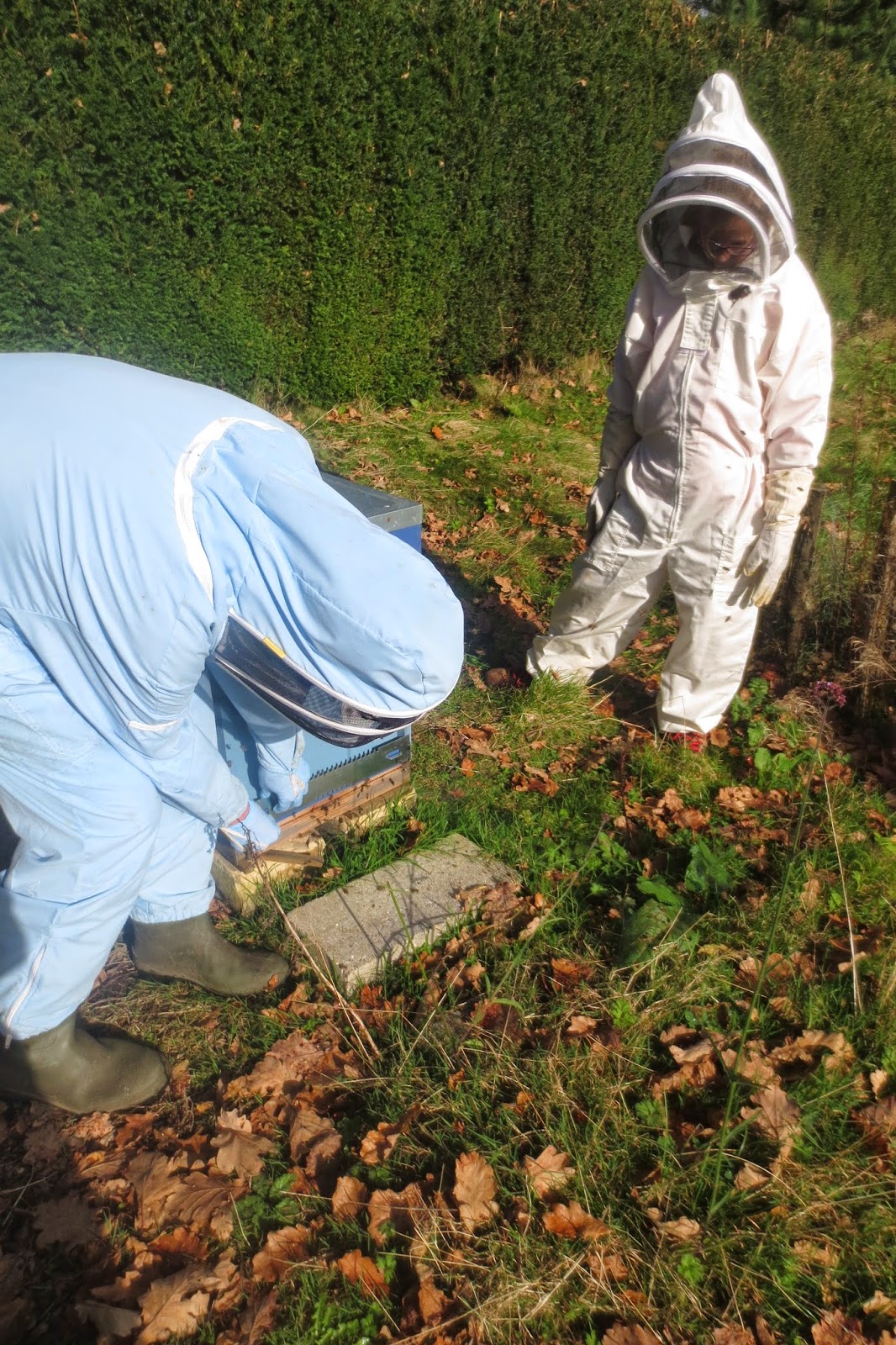Having tidied up the Star and put the Moon onto firm foundations, I really should have checked up on the hives end of last week or at the weekend. I did not think it was really pressing (having forgotten everything I sort of knew about queen rearing), and as I have my daughter round, who is not too keen on the bees, and also wanted to once again have the excellent services of my fellow teacher and super-hero Goulwenn, I didn't go till today. Not sure that much was lost, but possibly...
First things first: the Moon is doing fine. However, although the bees are collecting in the third super, nothing is capped yet. As the season is getting late, I doubt we will get much more honey than the two supers. If I had been able to put the third super on earlier, there might have been more to harvest.
The Star is still marked and suffering from the aftermath of the fall. All the honey in one super is gone. It really does look like a war zone.
Very few bees were in the supers, which led me to conclude that I must have accidentally killed the queen when I tried setting things aright last time. Memo to future: get the queen out first and put her in a safe place before you start cutting swathes through the hive. Live and learn.
As expected we found a number of empty queens cups on various frames: two conspicuously large and just as empty. Possibly, the first queen to hatch left the hive with a small swarm. Although this would not make much sense, as the season is late and that swarm would almost certainly be doomed, the very small number of bees suggest this may have happened. If I had inspected earlier, I could have prevented that. Always, always work to the animals' needs. Really have forgotten basic principles.
 |
| A drone's - what? |
But the weirdest thing was that under the queen excluder was a whole heap of dead drones. Even more weirdly, many were stuck in between the gaps of the excluder. Now drones, being larger, don't fit through the excluder, but I've never known this to be a problem; I've never seen drones stuck in the gaps of the excluder before. Why were they so desperate to get through? There are plenty of stores in the brood box, so it wasn't hunger driving them to trap themselves. Also - why did they die? Goulwenn and I saw strange protrusions from their abdomen and formulated weird theories of bee group sex with the new virgin queen in the darkness of the hive, against the rails of the excluder - something like that.
 |
| A drone's sexual organ |
However, when I checked in my bee books, I realised a drone's reproductive parts look nothing like that, not even after they've burst off after copulation. So the mystery remains: why are the drones there and what have they got sticking out of their backsides? Perhaps their guts bursting out of their bums from the squeeze?
While I could theorize that the virgin queen, while still slim, may have slipped through the excluder and the drones wanted to follow her, this also doesn't tally as the drones and queen live side by side in complete harmony in the hive and it's only during the mating flight that the queen releases pheromones that get the males all going for her.
 |
| Drones plugged through the queen excluder much like the gulls in 'Finding Nemo' |
 |
| A lot of shot-down drones |
Will be going to inspect again soon, to see whether the Star has a mated, laying queen. If not, I shall have to amalgamate it with the Moon for the winter.
So, while things are looking up for the Star, everything is still far from ideal. Hey-ho, that's the way it goes. Not a great year for honey due to various traumata (though it should have been), but as long as the bees pull through fine...
Oh, and having fully functional legs (and brains!) would be nice, too.



















































